10 Guns That Altered the Course of History

Certain firearms didn't just win battles - they fundamentally changed the trajectory of human civilization. These weapons sparked wars, ended empires, enabled revolutions, and reshaped entire societies through single decisive moments or groundbreaking innovations. Firearms have played a key role in the human history of the last 500 years, so many guns could make this list that it would be pages and pages long, but these ten firearms truly altered the course of history through their use or introduction. Here are the weapons that changed everything.
Historic Firearms @TFB:
- Wheelgun Wednesday: Gun Presented to The Man Who Killed Billy The Kid
- Wheelgun Wednesday: Pancho Villa's Golden SAA Estimated to Fetch Nearly a Million Dollars!
- Theodore Roosevelt Revolver Sells for Big Money
- Wheelgun Wednesday: Theodore Roosevelt's S&W Model No. 3 Revolver
- Wild West Auction Includes Colt Revolver that Killed Billy the Kid
1. Hand Cannon (14th Century)
The first practical firearms appeared in China during the 13th century, but European hand cannons of the 14th century marked the beginning of gunpowder warfare's dominance over traditional weapons. These crude metal tubes packed with black powder and projectiles could penetrate armor that had protected knights for centuries.
The technology spread rapidly across Europe, fundamentally changing medieval warfare and social structures. Within two centuries, these primitive weapons evolved into matchlocks and wheel-locks that would make armored cavalry obsolete. The hand cannon didn't just introduce a new weapon - it ended the age of armor and began the age of gunpowder. The feudal system built around heavily armored knights couldn't survive against common soldiers wielding firearms. Without the humble ‘hand cannon’ we wouldn't have the firearms we have today.
2. Wheellock Musket (1500s)
The wheellock mechanism created the first self-igniting firearm, solving matchlock reliability problems by generating sparks mechanically rather than requiring a burning match. The complex mechanism cost three times more than matchlocks and was never mass-produced for military use, limiting it to nobles, officers, and elite guards who could afford the expensive technology.
Even though Spanish tercios that conquered the New World actually used matchlock muskets, not wheellocks, Spain adopted matchlock muskets as their standard military arm in 1535. The wheellock's real contribution was proving that mechanical ignition worked and enabling practical pistols for cavalry use. Without wheellock innovations, the transition to flintlocks might have taken decades longer. The precision required for wheellock mechanisms also established gunmaking as a specialized craft separate from blacksmithing.
3. Colt Paterson (1836)
The first practical revolver was a commercial disaster that bankrupted Samuel Colt's company by 1842, with only 2,850 units produced before production ceased. The Paterson's bored-through cylinder design became the template for all future revolvers, but its historical impact came more through proving the concept than direct frontier use.
Texas Rangers armed with Patersons scored some notable victories like Walker's Creek in 1844, but the real game-changer for western settlement came later with Colt's Army and Navy revolvers. Over 200,000 Colt 1860 Army revolvers were produced, with 129,730 going to the US Government, and many were arsenal-refitted for frontier use after the Civil War. The massive surplus of proven Colt revolvers flooding the civilian market after 1865 truly opened the West to settlement. The Paterson deserves credit for starting the revolver revolution, but its legacy stems more from leading to the successful Army and Navy models than from its own limited production.
4. Lebel Rifle (1886)
The French Lebel rifle introduced smokeless powder to military use, creating a revolution in firearms technology that changed warfare forever. Unlike black powder weapons that produced dense clouds of smoke, the Lebel's 8mm cartridge burned cleanly. The rifle's smaller, more powerful cartridge allowed soldiers to carry more ammunition while delivering superior ballistics at longer ranges.
Other European powers scrambled to develop their own smokeless powder weapons, sparking an arms race that defined pre-World War I military preparations. The Lebel's technological advantage was so significant that it shifted the European balance of power toward France and forced every other nation to rapidly modernize their armies. This single innovation made every existing military rifle obsolete overnight…including the Lebel rifle itself.
5. Browning "Flapper" Rifle (1890)
John Moses Browning's gas-operated prototype rifle, nicknamed the "Flapper," introduced the principle of using muzzle gases to cycle automatic weapons, revolutionizing machine gun design forever. After observing how muzzle blast moved vegetation while shooting, Browning modified a Winchester 1873 with a hinged plate at the muzzle that captured gas pressure to operate the lever action automatically.
John Moses Browning's gas-operated prototype rifle proved that muzzle gases could cycle automatic weapons, but it wasn't the first automatic machine gun innovation. Hiram Maxim had already produced his recoil-operated machine gun in 1884, six years before Browning's flapper experiment in early 1890.
Browning's contribution was demonstrating an alternative operating system - gas operation rather than recoil operation - which broadened the potential for automatic weapon designs. By 1890, Browning offered his lighter gas-operated machine gun to Colt as an alternative to the heavy Maxim design that weighed 117 pounds with tripod and water. While Maxim had already introduced the modern age of automatic machine guns, Browning’s flapper and its simple gas-operated mechanism eventually influenced weapons like the AK-47 and M16. Browning's innovation was important for diversifying automatic weapon technology, not for inventing it.
6. Borchardt C-93 (1893)
Hugo Borchardt's semi-automatic pistol proved that self-loading handguns were practical weapons rather than mechanical curiosities, launching the era of modern pistol design. The C-93's successful operation demonstrated that recoil energy could reliably cycle a handgun's action, encouraging other designers to pursue semi-automatic development. Though commercially unsuccessful due to its size and complexity, the C-93 directly influenced Georg Luger's development of the legendary Luger pistol.
The weapon's technical success convinced military planners worldwide that semi-automatic pistols represented the future of individual firearms. Without the C-93's proof of concept it could be argued that the development of practical semi-automatic pistols might have been delayed by decades. The gun's influence extended far beyond its limited production, establishing the foundation for every subsequent semi-automatic pistol design.
7. FN Model 1900 (1900)
John Browning's FN 1900 didn't just introduce the slide-action design that became standard for most modern pistols - it launched the concealed carry revolution that changed society forever. The weapon's compact size and reliable operation made it the first truly practical pocket pistol, enabling widespread civilian carry for the first time. Its innovative slide design, with the barrel fixed to the frame and the breech sliding over it, became the template for virtually every subsequent semi-automatic pistol.
The 1900's success demonstrated that small, reliable handguns could be mass-produced affordably, creating an entirely new market for personal defense weapons. Police departments and civilians worldwide adopted the concept, fundamentally changing how societies approached personal protection and law enforcement. The FN 1900's influence on pistol design and civilian gun culture cannot be overstated.
8. FN Model 1910 (.380 ACP, 1914)
Yet another Browning design. A single FN 1910 pistol fired the shots that started World War I when 19-year-old Gavrilo Princip used it to assassinate Archduke Franz Ferdinand and his wife Sophie in Sarajevo on June 28, 1914. Princip's two shots from serial number #19074 triggered the July Crisis that led to the most devastating conflict in human history up to that point. The assassination provided Austria-Hungary with the pretext to declare war on Serbia, activating the web of alliances that dragged all major European powers into four years of unprecedented carnage.
Over 17 million people died in the resulting conflict, empires collapsed, and the political map of Europe was redrawn entirely. The weapon itself was an advanced Browning design featuring a striker-fired mechanism and wraparound recoil spring, but its historical significance comes from that single moment in Sarajevo. No other individual firearm can claim responsibility for triggering such massive historical consequences.
9. StG 44 (1943)
The German Sturmgewehr 44 created the "assault rifle" concept that fundamentally changed infantry combat and influenced every subsequent military rifle design. By using an intermediate cartridge that balanced power with controllability in automatic fire, the StG 44 provided tactical flexibility that neither submachine guns nor full-power rifles could match.
The weapon's selective fire capability and 30-round magazine allowed German soldiers to engage effectively at both close and medium ranges, providing unprecedented firepower for individual infantry. Though introduced too late to change the course of World War II, the StG 44's design principles became the template for post-war assault rifles worldwide. The Soviet AK-47 and American M16 both drew heavily from the StG 44's innovations, establishing the assault rifle as the dominant infantry weapon of the modern era. The weapon's influence on contemporary military small arms cannot be overstated.
10. Carcano Rifle (JFK Assassination, 1963)
Lee Harvey Oswald's 6.5mm Carcano Model 91/38 fired the shots that killed President John F. Kennedy on November 22, 1963, fundamentally altering American society and politics forever. The assassination ended the post-war era of American optimism and launched decades of conspiracy theories that eroded public trust in government institutions. Kennedy's death elevated Lyndon Johnson to the presidency, dramatically changing the course of the Vietnam War and Civil Rights legislation.
The Warren Commission's investigation of the shooting sparked the first major public questioning of official government narratives in modern American history. Shaking the nation, the assassination's impact extended far beyond politics, influencing American culture, media, and the relationship between citizens and their government. No other single shooting in American history has had such profound and lasting consequences for the nation's trajectory.
Conclusion: 10 Guns That Altered the Course of History
These ten guns didn't just sit in armories looking impressive - they actually changed history through specific moments and innovations that mattered. Some introduced game-changing technology, others ended up in the wrong hands at exactly the right time, and a few proved concepts that nobody thought would work.
What strikes me about this list is how many of these weapons were impactful despite major flaws or commercial failure, but still changed everything. The Paterson bankrupted Colt but led to the guns that won the West. The wheellock was too expensive for armies but pushed the boundaries of early firearms design and gun making. Even that little FN 1910 was just another pocket pistol until Princip used it to start a world war.
Which of these historically significant firearms do you think had the greatest impact? Are there other weapons that deserve recognition for changing the course of history? Share your thoughts in the comments below!

Staff Writer: TheFirearmBlog & AllOutdoor.com | Certified Gunsmith | Published Author | Firearm History Enthusiast
More by Sam.S
















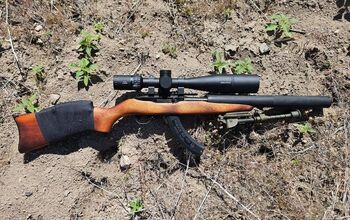

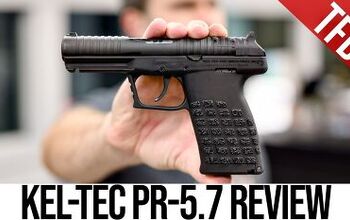
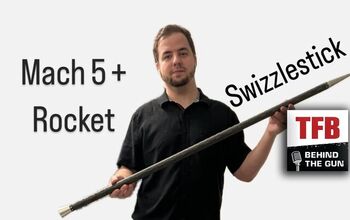
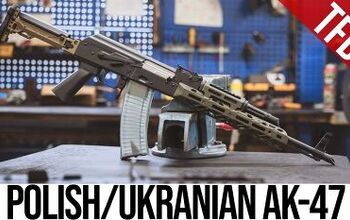

![[Partner 2025] Zastava Unveils New Machinegun Chambered in 6.5 Grendel](https://cdn-fastly.thefirearmblog.com/media/2025/09/28/05281/partner-2025-zastava-unveils-new-machinegun-chambered-in-6-5-grendel.jpg?size=350x220)


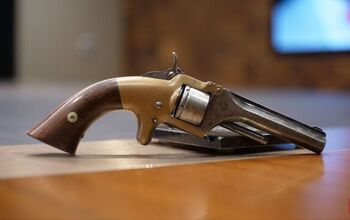




Comments
Join the conversation
Might want to look up Hiram Maxim?
John Moses Browning- The Gun God.👍️ He lives and reigns forever on Kolob!